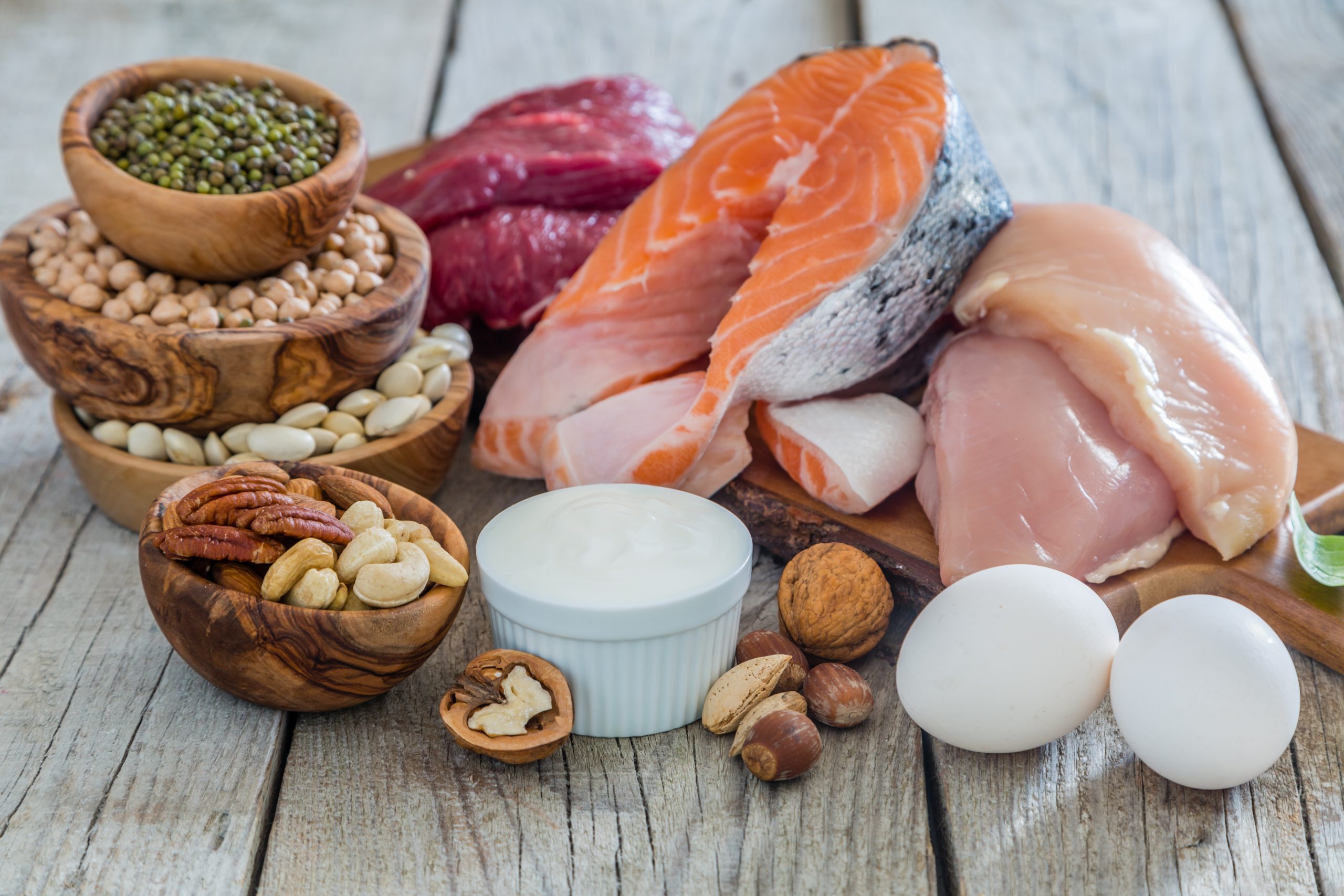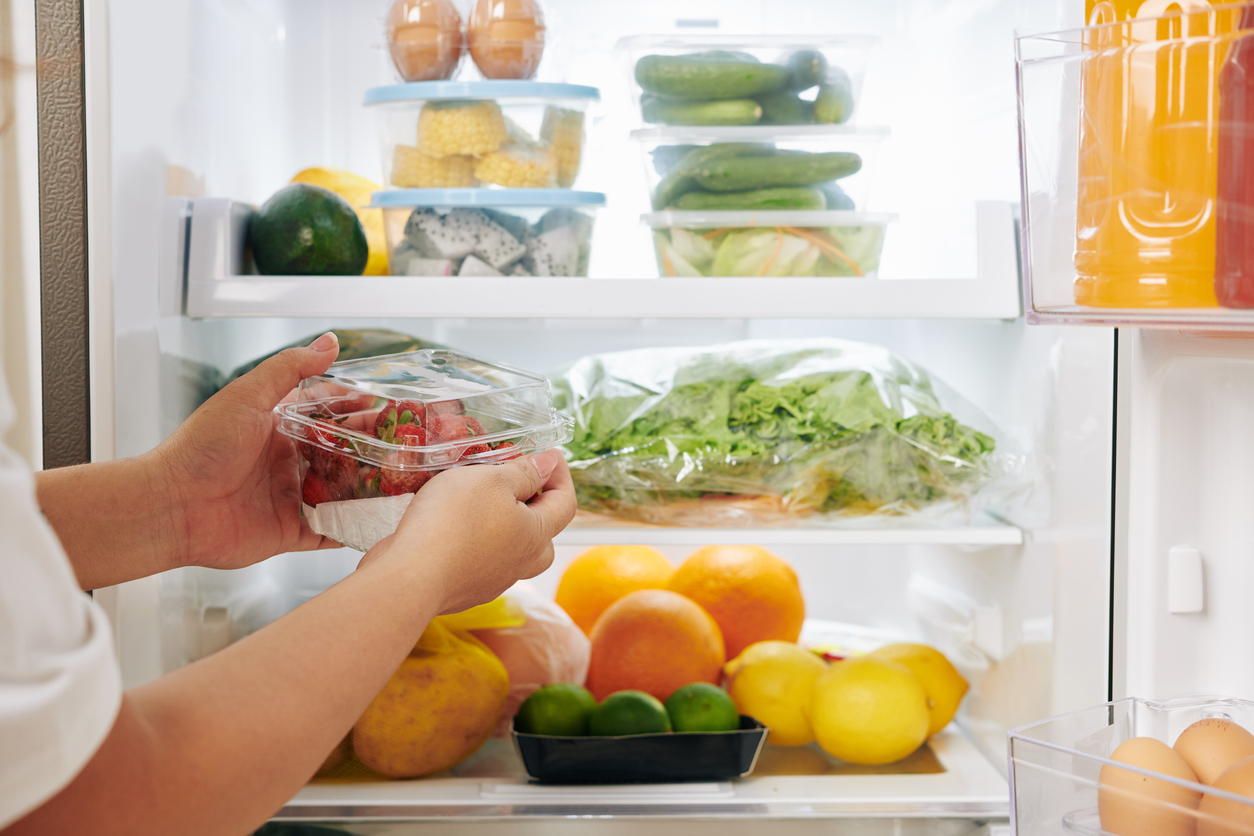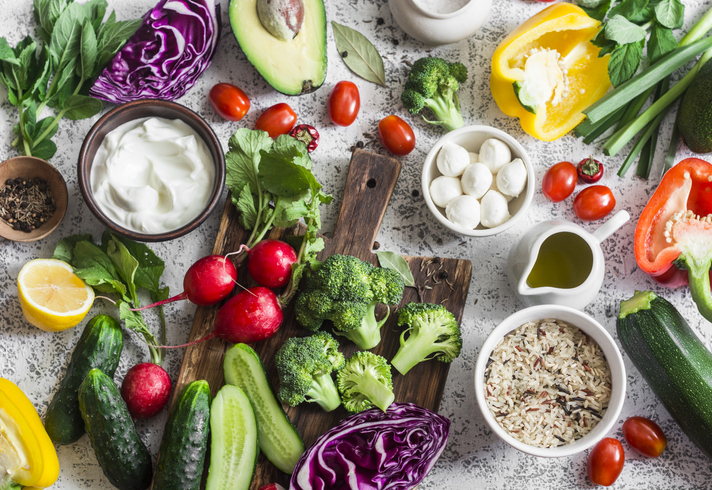
Protein Pontifications
We hear a lot in the media about eating protein and are faced with numerous choices of packaged foods with added protein at the grocery store. Is that because we are at risk of not getting enough? Are there better proteins to consume than others? Should you get your family a protein powder? Let’s work through all of these questions.
According to Health Canada, most Canadians meet their protein needs. This means it is not a nutrient of concern from a population deficiency perspective. If you focus on including some at most meals and snacks, you will get enough to meet your body’s needs of muscle maintenance and building of other protein-based molecules in the body, like hormones, enzymes and neurotransmitters. To understand this basic need, figure out your weight in kilograms and multiply it by 0.8 grams of protein. For an 80 kg (~175 lb) person, that means 64 grams of protein. What would this look like in a day of food intake? Choose 5 or 6 of the following:
- ¼ cup nuts/seeds –~6 grams protein
- ¾ c plain yogurt & fruit– ~8 grams protein
- 2 eggs– ~12 grams protein
- 2 sprouted grain toast — ~10 grams protein
- 1 cup each cooked black beans and quinoa (plus veggies!) — ~25 grams protein
- 1 piece cooked fish or chicken, ~4 oz (6 oz raw)– ~25 grams protein
- 1 cup edamame (soybeans in their pods), steamed– ~11 grams protein
For most of us, including protein at 3-4 meals and snacks means we can easily achieve our protein needs each day, from food first. There are times or situations where protein-enriched foods or supplements may be convenient, if you need a portable, convenient post-workout snack or if you have higher needs like those fighting infection, healing wounds or body building. Choose protein supplements and processed foods from varied sources with minimal added sugar and ingredients you know and can pronounce.
According to Canada’s Food Guide, we should eat protein foods as part of our balanced plate but also prioritize plant-based sources more often. Beans, peas and lentils, including soy foods like tofu, tempeh and edamame are affordable, nutritious sources of protein that benefit our health and also that of our planet. Include them daily or if newer to your table, at least a few times a week in place of red and processed meats. Those animal proteins, due to health reasons like increased heart disease and cancer risk, not to mention greenhouse gas emissions, should be limited to once every week or two. That is quite a shift from those who enjoy pepperoni on their pizza, ham on their sandwich, bacon and sausage at breakfast and burgers or steaks on the grill. Choosing wild game and grass-fed meats more often means you can eat them more frequently.
It’s also recommended to include fatty fish at least twice per week, but those consuming more seafood, even 5 times per week, reduced their heart disease risk even further. The omega 3 content of fatty fish like salmon, sardines, trout, herring and mackerel is also very important for our skin, immune, eye and brain health and decreasing inflammation in our bodies.
So forget the hype about maximizing your protein intake. Include it at most meals and snacks and prioritize natural plant sources and seafood and your family will easily meet their needs.




